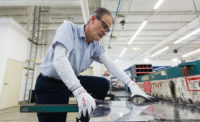How do the standards helping to regulate North America’s PPE industry support health and safety managers tasked with keeping their teams free from harm?
“Our business is the health and safety of workers and first responders,” says Craig Wallentine, Board Vice Chairman of the International Safety Equipment Association (ISEA). “Standards are a vital tool to help us achieve this. At every stage of the value chain, standards support compliance to keep workers free from harm.”
ISEA defines a standard as “a document, established by consensus and approved by a recognized body, that provides rules, guidelines or characteristics for a product for common and repeated use1.”
A key word here is “consensus.” In the U.S., the most common type of standard is voluntary, developed by interested parties with knowledge of a product or process and an understanding of how to establish common performance characteristics and guidelines.
There are estimated to be 600 different standards development organizations, most operating in specialist areas but each with a different approach to how they develop standards. Around 200 produce standards that are accredited by the American National Standards Institute (ANSI).
Who develops standards?
Among the many organizations developing standards are:
- The International Safety Equipment Association (ISEA), a trade association representing PPE manufacturers, distributors and test laboratories. ISEA is also a leader in the development of safety equipment standards which are approved by ANSI.
- ASTM International, which develops and publishes more than 12,000 consensus technical standards for a wide range of materials, products, systems and services.
Who approves standards?
ANSI has an overarching role to coordinate the activities of the organizations in the U.S. that develop standards. ANSI doesn’t write standards itself or approve products; it approves the processes used to create the standards and approves the final results as American National Standards.
Who provides oversight?
OSHA is an office within the Department of Labor which sets and enforces workplace health and safety rules. OSHA requires that many categories of PPE meet the standards approved by ANSI, but OSHA does not specify how products are certified.
“Without the reliability of a standard,” says Rodney Taylor, a Global PPE Sales & Marketing Manager, “health and safety managers and buyers run the risk of under-specifying PPE, leaving workers at greater risk of injury, or of over-specifying, which can incur unnecessary expense.”
Impact-resistant
ANSI/ISEA 138, the American national standard for performance and classification for impact resistant hand protection, was published in March 2019.
Standards for industrial gloves that protect against cuts, punctures, abrasion and chemical exposure had existed in the U.S. for many years, but none assessed the performance of PPE designed to protect against back-of-hand impact injuries.
PPE is seeing waves of innovation in materials technology, reinforcing the need for this standard. Work on ANSI/ISEA 138 began in 2016 by a specialist sub-group of ISEA’s long-established Hand Protection Group. This comprised major glove manufacturers and a surgeon specializing in plastic and reconstructive hand surgery.
ANSI/ISEA 138 establishes minimum performance, classification and labelling requirements. However, it goes further in incorporating performance levels from 1 to 3, clearly identified with mandatory pictograms.
Hand protection classification
If ANSI/ISEA 138 is proving to be a game-changer for PPE standards, ANSI/ISEA 105-2016 Hand Protection Classification is a good example of how a revision to a standard can really meet end-users’ needs.
This voluntary standard, first published in 1999, covers classification and testing for mechanical protection, chemical protection, ignition resistance and vibration reduction. The standard incorporates performance levels, this time from 0 to 6, but the 2016 revision goes further than previous versions in also specifying nine cut resistance levels.
Standards with relevance & credibility
To support the learning process, ASTM International operates an online platform, Compass, to keep safety managers up-to-date with the latest versions of PPE standards. As for the ongoing development of standards themselves, “participation is key,” says Mary Mikolajewski, manager of technical committee operations for ASTM International. “We are always looking for groups such as managers and end-users to participate in the process. Their insights are crucial.”
When reviewing a company’s PPE provision, Jill Clements, chair of the ISEA Hand Protection Product Group, encourages health and safety managers to understand an item’s total lifecycle cost: “The average cost of a hand injury is $20,000, and that’s without factoring in surgery or lost time or whether someone else is available to do the job. If a higher-specification product reduces injury levels, its real cost comes down.”
Reference
1. https://safetyequipment.org/isea-standards/standards-faq/what-is-a-standard/





